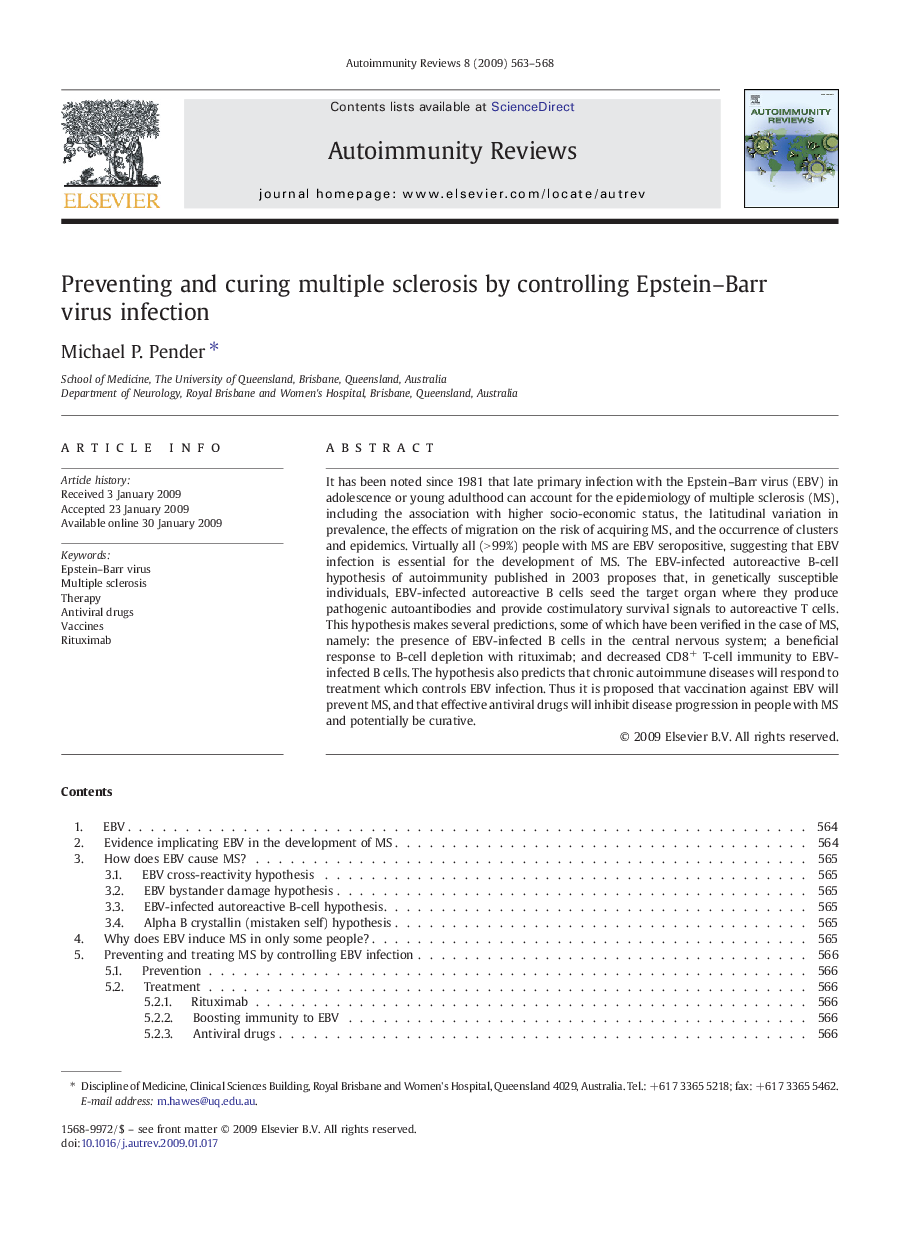| کد مقاله | کد نشریه | سال انتشار | مقاله انگلیسی | نسخه تمام متن |
|---|---|---|---|---|
| 3342292 | 1214276 | 2009 | 6 صفحه PDF | دانلود رایگان |

It has been noted since 1981 that late primary infection with the Epstein–Barr virus (EBV) in adolescence or young adulthood can account for the epidemiology of multiple sclerosis (MS), including the association with higher socio-economic status, the latitudinal variation in prevalence, the effects of migration on the risk of acquiring MS, and the occurrence of clusters and epidemics. Virtually all (> 99%) people with MS are EBV seropositive, suggesting that EBV infection is essential for the development of MS. The EBV-infected autoreactive B-cell hypothesis of autoimmunity published in 2003 proposes that, in genetically susceptible individuals, EBV-infected autoreactive B cells seed the target organ where they produce pathogenic autoantibodies and provide costimulatory survival signals to autoreactive T cells. This hypothesis makes several predictions, some of which have been verified in the case of MS, namely: the presence of EBV-infected B cells in the central nervous system; a beneficial response to B-cell depletion with rituximab; and decreased CD8+ T-cell immunity to EBV-infected B cells. The hypothesis also predicts that chronic autoimmune diseases will respond to treatment which controls EBV infection. Thus it is proposed that vaccination against EBV will prevent MS, and that effective antiviral drugs will inhibit disease progression in people with MS and potentially be curative.
Journal: Autoimmunity Reviews - Volume 8, Issue 7, June 2009, Pages 563–568